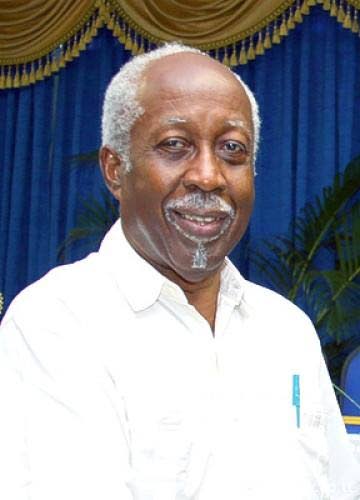Voodoo and quakes in Haiti

THE EDITOR: This year, African History Month is dedicated to understanding Haiti because there is so much misjudgment imposed on our Caricom neighbour. Imagine some otherwise intelligent people have assumed that Haiti suffers from natural disasters such as severe earthquakes because the country is a nation of voodoo devotees.
In fact, voodoo or vodun is an ancient West African faith that is still practised in Benin, formerly Dahomey. A BBC report in 2011, during the visit of Pope Benedict XVI, reported, “Voodoo is more than a belief system, it is a complete way of life, including culture, philosophy, language, art, dance, music and medicine...Voodoo Day is a public holiday and there is a national Voodoo Museum.
“It has none of the negative connotations it has in the West and many of those who are officially Christian or Muslim also incorporate some voodoo elements into their beliefs, especially in times of crisis.
“People across West Africa, especially Togo, Ghana and Nigeria, hold similar beliefs but in Benin it is recognised as an official religion, followed by some 40 per cent of the population.”
And so too is voodoo highly regarded in Haiti. Christians, Roman Catholics in particular, move comfortably between the two faiths. It is the Hollywood-type portrayal of voodoo which has tainted our regard for that West African religion which played a major part in the movement for emancipation in Haiti.
Now in dealing with Haiti’s earthquakes we have to look at the Haitian geology as well as the people’s building practices. We may not be aware of these physical situations because in our school curriculum sufficient emphasis is not placed either on geography or geology.
Former ambassador Reginald Dumas commented on my recent Facebook post and noted, “Where earthquakes in Haiti are concerned, the average Haitian knows nothing about tectonic plates, and in any case cannot afford an earthquake-resistant dwelling. In TT, we know that God is a Trini and will protect us, and in any case we also know nothing about tectonic plates.”
I remind readers that in 2004 the late United Nations secretary-general Kofi Annan appointed Dumas as his special adviser to help tackle Haiti's escalating political, economic and social turmoil.
In explaining the frequency of earthquakes in the area, the Miami Herald (August 16) stated, “The island of Hispaniola, home to both Haiti and the Dominican Republic, straddles four tectonic plates in the Caribbean Ocean...Earthquakes occur along the boundaries of these tectonic plates, which make up the Earth’s crust. These borders are called faults. Haiti lies at the intersection of the Caribbean plate and the Gonâve, Hispaniola, and North Hispaniola microplates...And it’s “caught in the crunch” between the Caribbean and North America plates, where sudden releases of energy in the crust as the two plates grind together cause earthquakes.”
The earthquake on January 12, 2011, which struck Port-au-Prince with a magnitude of 7.0, left between 100,000 and 316,000 deaths. Some 300,000 Haitians were injured. It was the largest recorded in Haiti since 1770. The Port-au-Prince earthquake was followed by one on August 14 this year at Nippes, Les Cayes. A total of 2,248 people died and 12,763 were injured.
Between 1562 and 1751 there were also earthquakes of varying intensities. It should be noted that a number of tsunamis also occurred during those centuries.
I have seen suggestions that Haitians have focused on building their homes to withstand hurricanes which are big threats in the country. In addition, there are reports about the quality of building materials. Structures made of concrete and cinder block hold up well during storms but are more vulnerable during earthquakes, according to the Associated Press.
Following the January 12 earthquake one study said, “Haiti’s infrastructure was completely unprepared for the earthquake...With rare exceptions, buildings were not planned, designed, or constructed with the necessary detailing to survive seismic events. While some buildings may have been engineered, the necessary channels were not in place to verify compliance during construction.”
I wonder if we in TT can draw any conclusions from these latter remarks.
AIYEGORO OME
Mt Lambert


Comments
"Voodoo and quakes in Haiti"